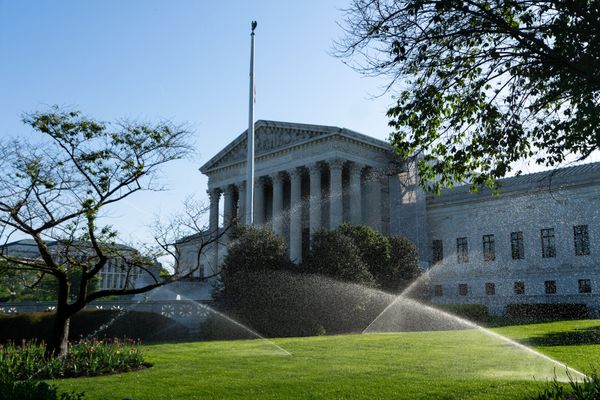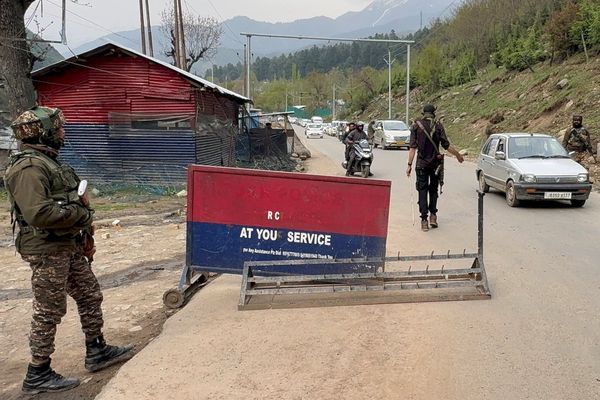The elevated levels of India’s fiscal deficit and public debt have been a matter of concern for a long time in India. Even before the COVID-19 pandemic, debt levels were among the highest in the developing world and emerging market economies. The pandemic pushed the envelope further and relative to GDP, the fiscal deficit in 2020-21 increased to 13.3% and the aggregate public debt to 89.6%. As the economy recovered after the pandemic, the deficit and debt ratios have receded to 8.9% and 85.7%, respectively.
Also read | India’s FY23 external debt rises to $624.7 billion: RBI
The projections show that even without any serious disruptions to the economy, the debt level is unlikely to return to the pre-pandemic trajectory in the medium term. With elections to a number of States scheduled in 2023 and with the general election for 2024, the electoral budget cycle could push the debt ratio further. And, there can be serious questions about its sustainability unless targeted interventions are made to reduce the debt burden, which may not be politically easy with elections on the horizon.
Financial repression
The debt-dynamics equation states that when there is no primary deficit (fiscal deficit in the year excluding the past legacy of interest payments), if the growth rate of GDP exceeds the effective interest rate paid on government bonds, the overall debt will decline. However, what is missed in these discussions are the distortions caused by financial repression to keep the interest rates on government borrowing low to reduce the cost. The statutory liquidity ratio (SLR) stipulated by the Reserve Bank of India (RBI) requires the banking system to hold 18% of their demand and time liabilities in government securities. Besides, the RBI intervenes in the market through open market operations around the time when government borrowing is taken up to keep the interest rates on government borrowing repressed. When the interest rate on government debt is lower than the growth of GDP, the debt may decline but the financial market gets distorted.
Also read | India setting up $4-billion fund to backstop corporate debt market
Thus, even when the sustainability of debt may not be threatened in the medium term, the costs of carrying high deficits and debt to the economy are heavy. First, on average, interest payments constitute over 5% of GDP and 25% of the revenue receipts, this is more than the government expenditure on education and health care put together. Large interest payments crowd out the much-needed expenditures on physical infrastructure and human development and emerging priorities to make the green transition. The issue is of concern in Punjab, Kerala, Rajasthan, and West Bengal. In Punjab, the Debt to GSDP ratio is 48.9%, in West Bengal, 37.6%, Rajasthan 35.4%, and in Kerala close to 33%.
Second, high levels of debt make it difficult to calibrate counter-cyclical fiscal policy and constrain the ability of the government to respond to shocks.
Third, the debt market in India is largely captive with mainly the commercial banks and insurance companies participating in it to meet SLR requirements. With a cash reserve ratio (CRR) of 4.5% and SLR of 18% of net demand and time liabilities, and 40% of the credit by the commercial banks earmarked for the priority sector, the resources available for lending to the manufacturing sector gets squeezed, driving up the cost of borrowing of the sector. Furthermore, the rating agencies keep the sovereign rating low when deficits and debt are higher, and this increases the cost of external commercial borrowing. Finally, ‘today’s borrowing is taxing tomorrow’ and the burden of large deficits and debt will have to be borne by the next generation.
On the debt burden
It is clear that in the present fiscal environment, even achieving a consolidated debt-to-GDP ratio of 58.2 recommended by the 14th Finance Commission for 2019-20 would be unfeasible in the medium term. The Finance Commission had recommended that the Union government bring down its deficit relative to GDP from 43.6% in 2015-16 to 36.3%, and the States maintain their deficit at about 22%. Even before the pandemic, the aggregate public debt had slipped to 74.3% in 2019-20, and the pandemic pushed it to 89.7% in 2020-21. With the nominal GDP recovering to grow at 18.5% in 2021-22 after the pandemic, the debt ratio declined only marginally to 85.7%. This implies that every individual in the country bears a debt burden of ₹ 1,64,000. With the high primary deficit of 3.7% of GDP in 2022-23 and budgeted at over 3% in 2023-24, we will have to contend with elevated debt levels in the medium term.
The issue is of critical importance; therefore, the fast pacing of fiscal consolidation is imperative. Fortunately, after six years, Goods and Services Tax (GST) has stabilised and has shown high growth potential. As the technology platform has stabilised, it is expected to maintain high buoyancy in the medium term. The technology has helped to improve tax administration and improved compliance. With the cross-matching of GST returns with income-tax returns, income-tax compliance too is expected to improve. In the medium term, the aggregate tax-GDP ratio is likely to increase by 1.5 percentage to 2 percentage points.
In terms of policy interventions, this is the time to rethink the role of the state and vacate activities that should really belong to the market rather than competing with it. At the central level, even after much talk about disinvestment, progress has been slow. Rather than dispensing with activities such as telecom to the private sector, the government continues to pour money into Bharat Sanchar Nigam Limited. Equally disturbing are the employment melas to fill so-called vacant posts which have been found to be redundant. At the State level, it is important to guard against the return to the old pension scheme and indulge in large-scale giveaways for electoral reasons. Of course, redistribution is a legitimate government activity, and that is best done through cash transfers rather than subsidising commodities and services. Giving subsidies alters relative prices, resulting in unintended resource distortions. Equally important is the need to impose hard budget constraints by enforcing Fiscal Responsibility and Budget Management rules in allowing States to borrow. Macroeconomic stabilisation is predominantly a Union government responsibility. Therefore, the Union government should follow the rules it makes, and enforce the rules on the States effectively.
M. Govinda Rao is a former Member of the Fourteenth Finance Commission. He is currently Chief Economic Adviser, Brickwork Ratings. The views expressed are personal







